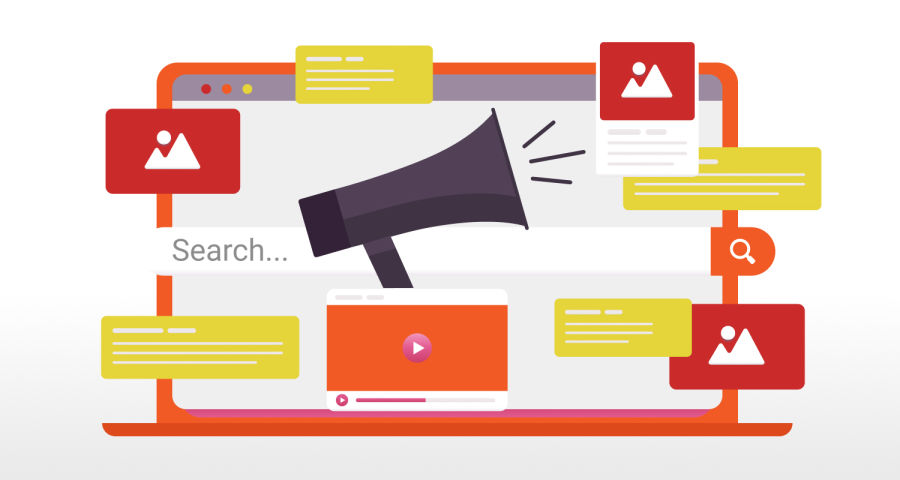//
Apr 16, 2024
Simplifying Your MarTech Stack for Success
When the digital landscape is constantly evolving, the complexity of marketing technology (aka MarTech) has become a formidable challenge for businesses.
As technologies proliferate, companies find themselves grappling with an intricate web of tools and platforms, each promising to and effectiveness. Yet, integrating these diverse technologies into a cohesive system poses significant challenges, affecting strategic decision-making and operational fluency.
What is MarTech?
, short for marketing technology, refers to the suite of software, tools, and digital solutions that businesses use to plan, execute, and measure their marketing campaigns and strategies.
It encompasses a wide range of applications and platforms designed to enhance marketing efforts, , and increase the efficiency and effectiveness of marketing processes.
The goal of MarTech is to enable more efficient and effective marketing operations, provide deeper insights , automate repetitive tasks, and offer more personalized and targeted marketing experiences.
As digital marketing evolves, the MarTech landscape continues to expand, offering an ever-growing array of tools and technologies designed to meet the diverse needs of marketers and businesses.
Some of the Benefits of Strategic MarTech Integration
When integration is handled strategically across the tech stack, businesses can reap substantial benefits:
- Enhanced Data Insights: Integrated systems provide a holistic view of marketing data, enabling deeper insights and more informed decision-making.
- Improved Campaign Coordination: Seamless tool integration ensures consistent messaging and branding across all marketing channels.
- Increased Operational Efficiency: Automating data exchanges and workflows between tools can save time and reduce manual errors, boosting overall marketing productivity.
- Better Customer Experience: A unified MarTech stack helps deliver a cohesive and personalized customer experience across all touchpoints.
The Growing Complexity of Marketing Technology Stacks

Today's marketing technology stacks are intricate ecosystems comprising tools and platforms that handle everything from (CRM) to data analytics, content management, social media monitoring, and beyond. A typical MarTech stack might include a CRM system, an email marketing platform, a social media management tool, an analytics suite, and a content management system (CMS), each vital to different aspects of marketing.
The diversity of these tools presents a dual-edged sword. On one hand, they offer unprecedented opportunities to target, engage, and convert audiences with precision. On the other, they introduce complexity, especially when it comes to integrating these disparate systems to work cohesively.
Key Ways MarTech Complexity May Impact Outcomes
Integrating a MarTech stack is no small feat. It involves aligning various technologies to ensure they communicate effectively, share data seamlessly, and contribute to unified marketing goals. Let’s look at three impacts of poor integration:
Impact on Strategic Business Decisions
MarTech stack complexity can obscure the clarity of strategic business decisions. For example, when data integration is lacking, a company may struggle to understand which marketing channels are driving conversions, in less effective channels.
This misattribution can skew strategic decisions, from budget allocation to strategic pivots in marketing approaches, ultimately affecting the bottom line.
Attribution Challenges
Attribution in a complex MarTech landscape is fraught with challenges. When customer interactions are tracked across disjointed systems, attributing a sale to a specific marketing touchpoint becomes arduous.
For instance, if a customer's journey spans multiple devices and channels before a purchase, and if these touchpoints are not seamlessly integrated, the business might credit the final interaction as the sole conversion driver, ignoring the cumulative impact of preceding interactions.
This flawed attribution can lead to misinformed strategic decisions, such as away from crucial touchpoints that actually contribute significantly to the conversion path.
Strategic Alignment
Strategic alignment is hindered when MarTech stacks grow in complexity without a clear blueprint. Companies might adopt new technologies based on trendiness or perceived utility without considering their integration into the existing stack or alignment with overall business goals.
For instance, adopting an advanced AI-driven analytics tool is futile if it cannot effectively pull or interpret data from other key platforms within the stack.
This misalignment can lead to fragmented marketing strategies, where the technology drives the strategy rather than supporting it, often resulting in diluted effectiveness and wasted resources.
Some Best Practices for MarTech Integration

In navigating the intricate landscape of marketing technology, businesses must adhere to a set of best practices that not only streamline the integration process but also optimize the performance and synergy of their MarTech stacks.
1. Comprehensive Technology Audit:
- Conduct a Thorough Evaluation: Begin with a detailed assessment of your . Identify the tools currently in use, their functionalities, and how they interact with one another. This evaluation should cover all platforms, from data analytics to customer engagement tools.
- Identify Redundancies and Gaps: Look for overlapping functionalities that can lead to inefficiencies. At the same time, pinpoint any gaps in your stack where additional tools could enhance your marketing capabilities.
2. Strategic Tool Selection:
- Adopt a Needs-Based Approach: Choose tools based on your specific marketing and the unique needs of your business, rather than being swayed by market trends or vendor promotions.
- Prioritize Integration Capabilities: Opt for tools that offer easy integration with your existing stack. Seamless data flow between systems is crucial for a unified marketing strategy.
3. Phased Integration Approach:
- Step-by-Step Implementation: Rather than overhauling your entire stack at once, . This allows for careful monitoring of each step and minimizes disruption to ongoing operations.
- Evaluate and Adjust: After each phase, evaluate the impact on your marketing operations and make necessary adjustments. This iterative process ensures that each integration adds value to your MarTech stack.

4. Foster Cross-Functional Collaboration:
- Encourage Team Involvement: Integration efforts should not be siloed within the marketing team. Involve stakeholders from IT, sales, customer service, and other relevant departments to ensure the MarTech stack aligns with broader business goals.
- Promote Knowledge Sharing: Create channels for communication and collaboration among teams. This cross-functional engagement facilitates a holistic approach to MarTech integration, leveraging diverse insights and expertise.
5. Emphasize Training and Adaptation:
- Invest in Training: Ensure that your team is proficient in using the integrated MarTech stack. Regular training sessions can .
- Adapt to Feedback: Be receptive to feedback from users within your organization. User experiences can provide valuable insights into the effectiveness of the integration and areas for improvement.
6. Continuous Monitoring and Optimization:
- Establish Key Performance Indicators (KPIs): to measure the success of your MarTech integrations. Regularly track these KPIs to gauge effectiveness and identify areas for optimization.
- Stay Agile: The MarTech landscape is continually evolving. Maintain agility in your strategy, allowing for adjustments and updates to your stack in response to new developments and shifting business objectives.
These strategic practices to MarTech integration foster a more data-driven, efficient, and cohesive marketing operation, ultimately driving better results and a competitive edge in the digital marketplace.
Two Strategies to Improve MarTech Stack Efficacy
Adopting Robust Systems
To combat MarTech complexity, businesses can adopt that consolidate customer data into a single view, enhancing strategic decision-making and attribution accuracy.
For example, implementing a allows businesses to aggregate and unify customer data from various sources, providing a holistic view of the customer journey.
This consolidation enables more precise attribution modeling, allowing marketers to accurately assess the impact of each touchpoint on the customer's path to conversion, thereby optimizing the allocation of marketing resources and aligning them more closely with business objectives.
Future-Proofing

Future-proofing a MarTech stack requires a forward-looking strategy that emphasizes flexibility and adaptability.
For instance, choosing platforms with robust API capabilities ensures that new tools can be integrated smoothly as the technology landscape evolves. Additionally, investing in technologies that and machine learning can enable businesses to adapt to changing marketing dynamics proactively.
These systems can analyze vast datasets to predict trends, customer behaviors, and campaign outcomes, allowing businesses to stay ahead of the curve and ensure their MarTech stack remains a strategic asset rather than a liability.
Harness the Complete Potential of Your Marketing Technology Investments
As businesses strive to harness the full potential of their MarTech stack, the integration of these technologies emerges as a pivotal endeavor.
While the journey is fraught with challenges, a strategic, methodical approach can transform complexity into competitive advantage. And while in-house strategies form the bedrock of successful integration, the complexity and ever-evolving nature of the MarTech landscape often necessitate external expertise.
Partnering with an agency like that specializes in MarTech can provide businesses with the nuanced expertise needed to navigate the intricate web of marketing technologies. Such a partnership can accelerate the integration process, mitigate risks, and optimize the overall performance of the marketing tech stack, ensuring that businesses stay agile and responsive in the dynamic digital arena.
While the path to effective MarTech integration is fraught with challenges, it is a journey worth embarking on, with potential allies in the form of specialized agencies ready to guide businesses through the complexities of the digital age.







